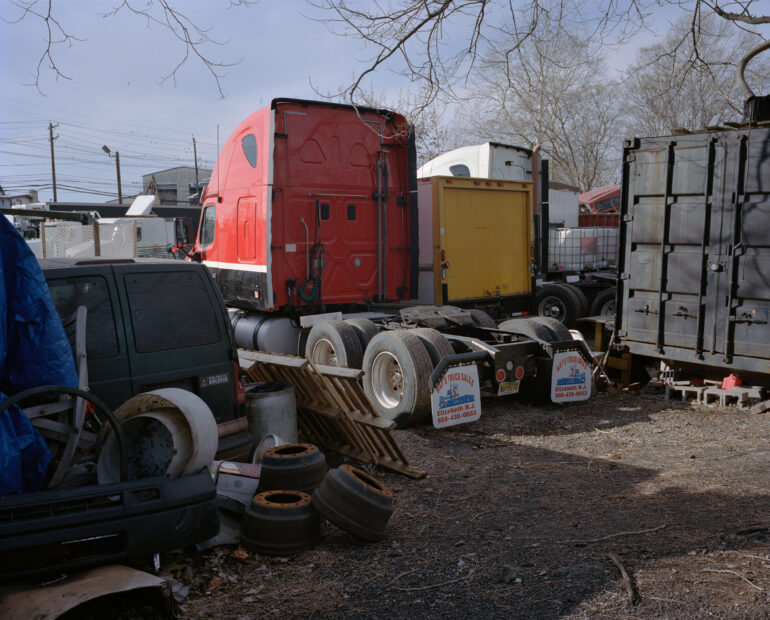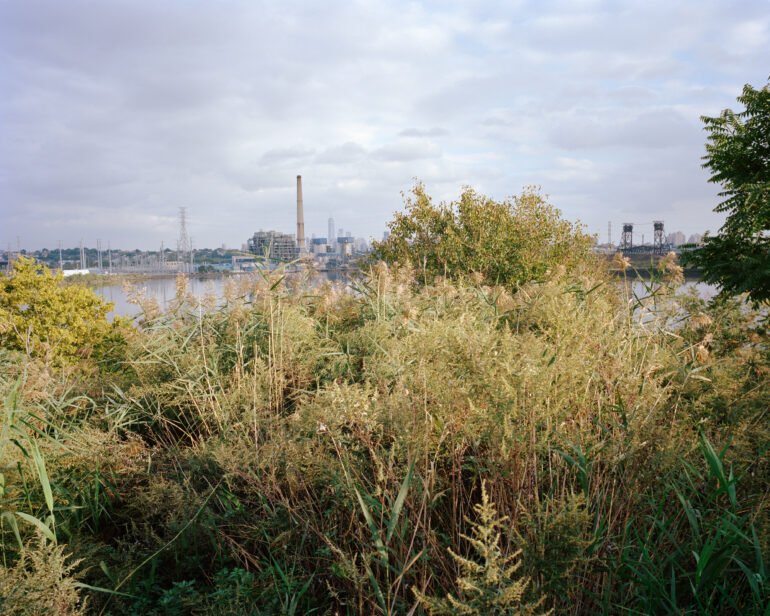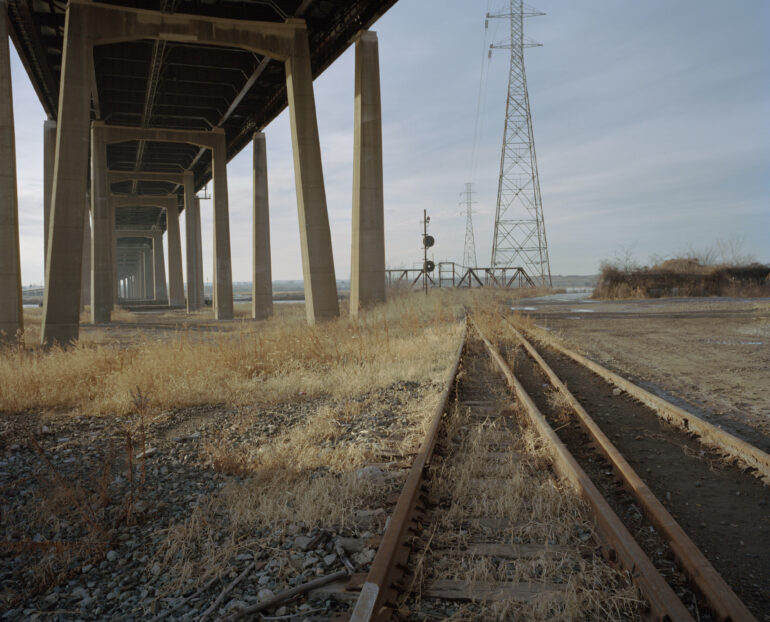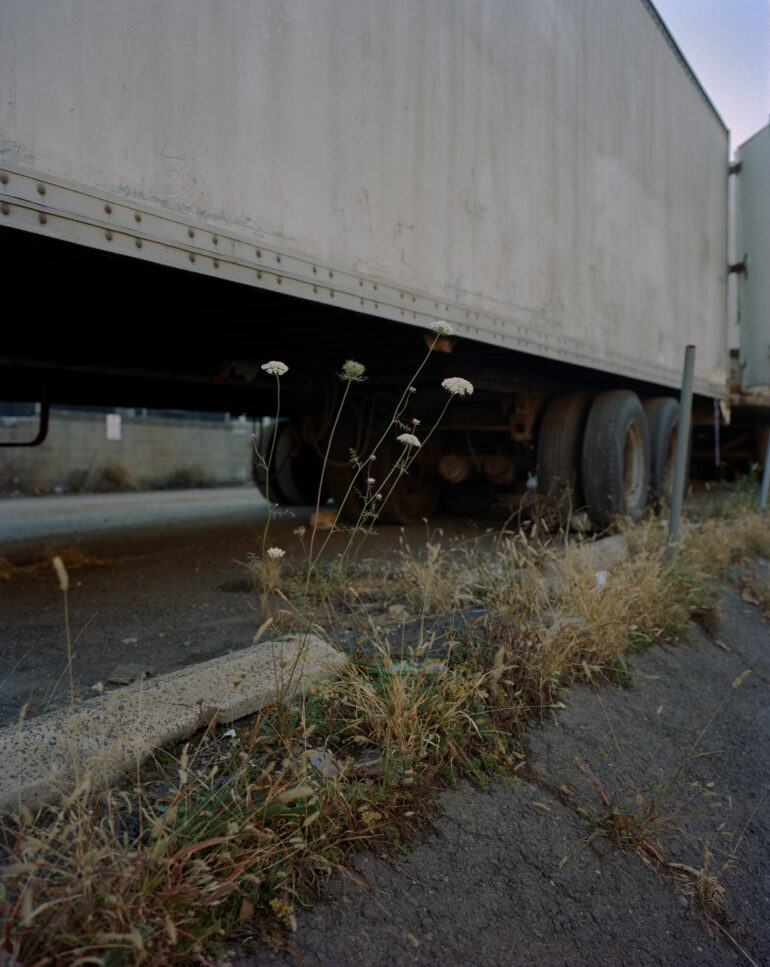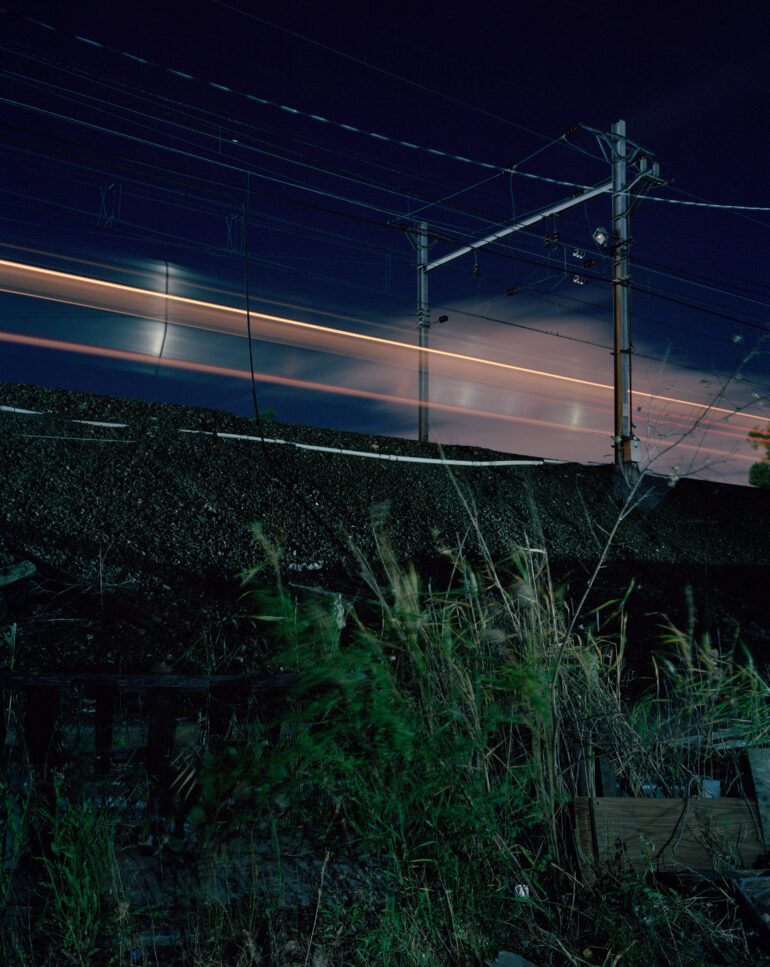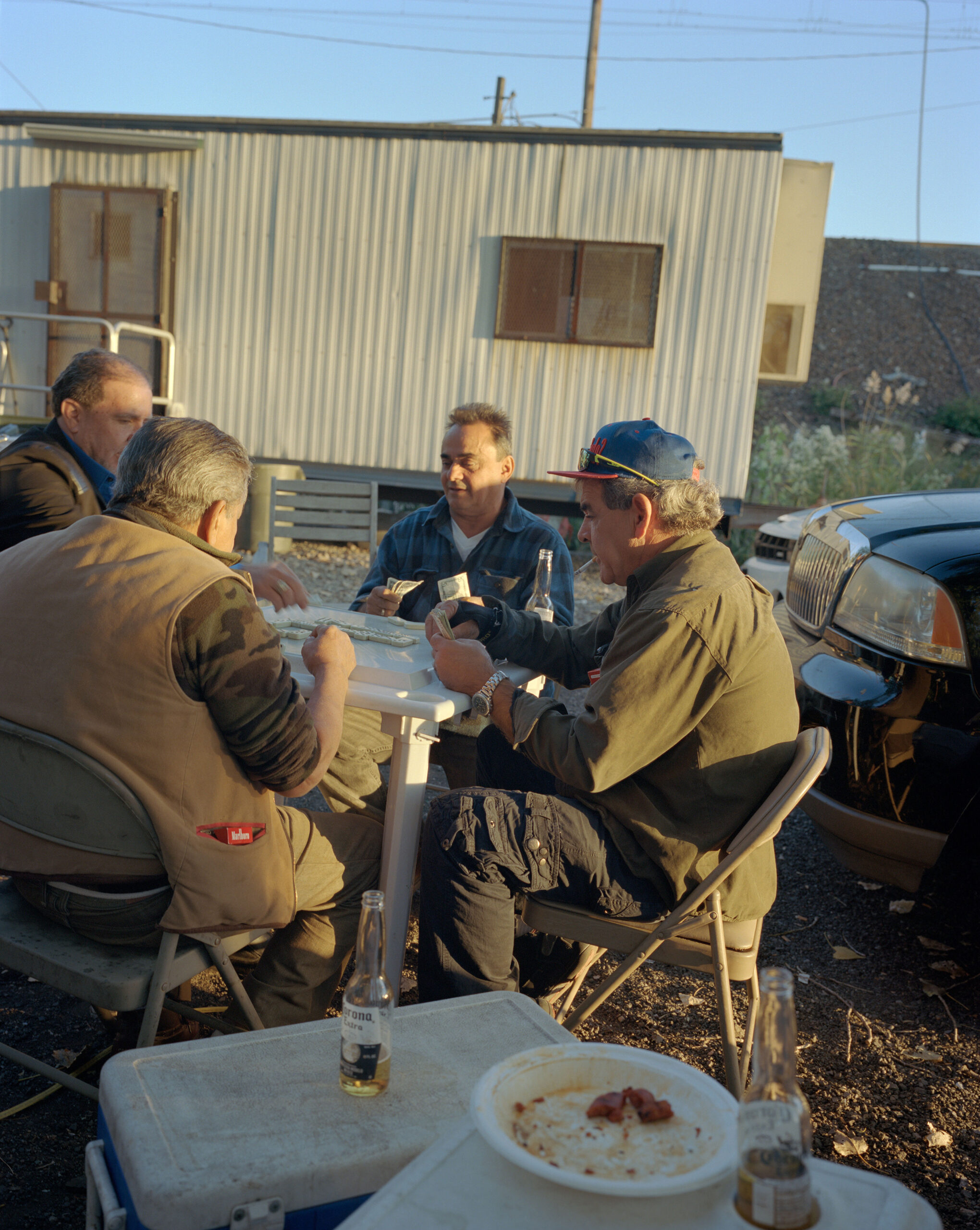“I passed the tree each day at school, and witnessing it change with the seasons moved me to the point that I envisioned the cycle of its appearance through the seasons,” says photographer Nicholas Pollack about his origins in photography. “I got a disposable camera to show this in its completion: winter, spring, summer, fall. As I reflect on it now, it strikes me more as an incident of ‘active looking’ than a photographic impulse, but I guess the two aren’t mutually exclusive.” This is a quality that’s ever-present in his documentary project called Meadow.
All images by Nicholas Pollack and used with permission. See more on his website. Be sure to pick up a copy of Meadow if you’re interested.
The description of Meadow, as it was pitched to us, is a fascinating one that’s filled with curious questions:
Inspired by the landscape of the New Jersey Meadowlands, Meadow is a body of work about a small plot of land and the friendships and interactions between a group of truck drivers who forge a transcendent relationship with the place.
Yes, it’s about people hanging out. “I was fascinated with this geographical area of New Jersey which is what led me to photograph in Branch Brook Park in Newark, and what compelled me to photograph in the Secaucus area of the Meadowlands,” says Nicholas to us in an interview. “I grew up near this place but had no real experience of it outside of passing it in a train or car. My initial photographs of youth in Newark provided a kind of portal for exploring the larger social and economic structures informing the area, including the trucking industry.” To most people, this very candidly won’t sound like much of a project. But it’s an exercise in human interaction and confidence in your work.
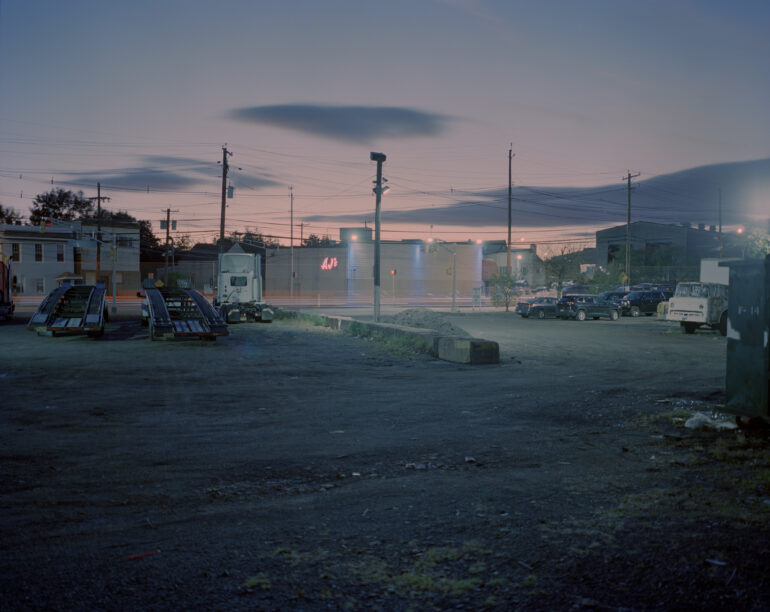
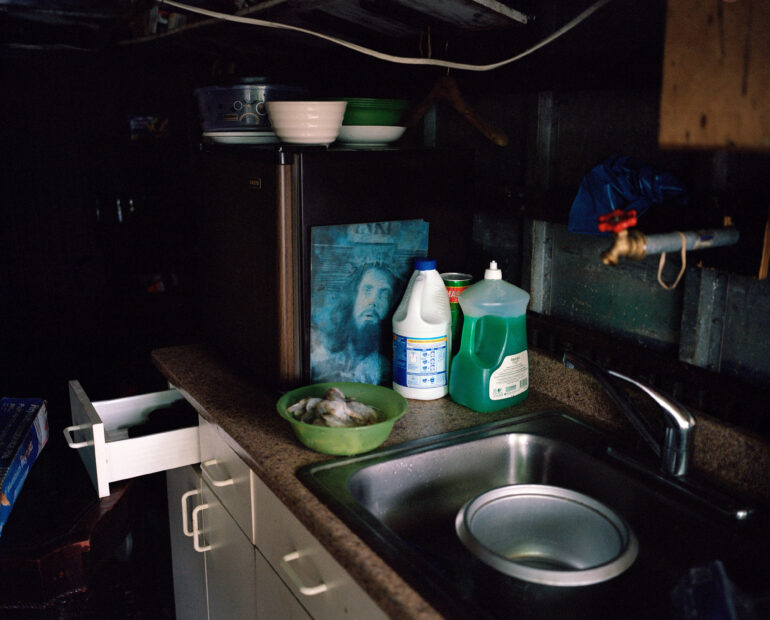
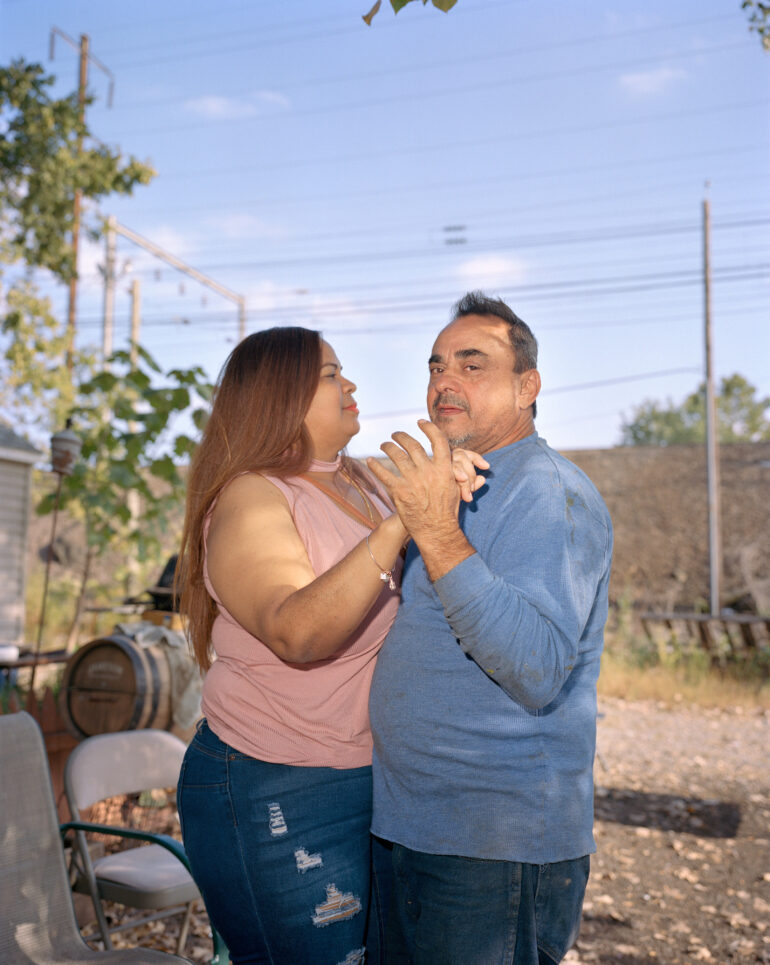
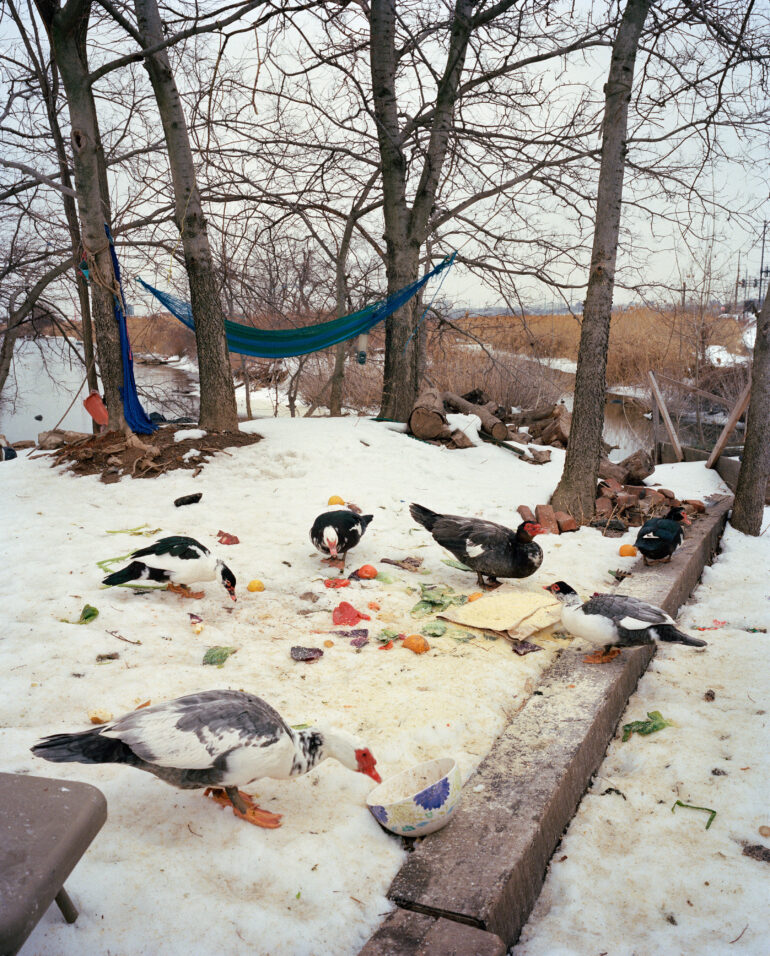
To do this project, Nicholas Pollack needed to gain the trust of the truckers in the meadows. He had to do the same for his first book, Nothing Gold Can Stay. For that project, he needed to gain the trust of teenagers. Most of the time, he’s spending time with them and not taking pictures. This critical part of relationship building involves just getting to know each other.
“I befriended Eugene, who is a truck driver, and through our friendship, I met other truckers.”
Some greener photographers might think that this is a scary idea. But Nicholas tells us that he wasn’t really scared at all. “I mean, walking alone through stretches of land can be a bit spooky, but I think basic common sense should keep anyone who ventures there out of trouble,” says Nicholas.
The thing in the back of my mind was and remains how to get the shot. I was primarily balancing my time socializing with Eugene and his friends with finding opportune moments to photograph. I think achieving this delicate balance was the trickiest part of making this work.
Nicholas Pollack
Basically, what we see in these photos is a salt marsh that’s a major center for economic activity. The area is home to the American Dream Mall, the Meadowlands Sports Complex, and the town of Secaucus, amongst other things. That means that there has been contamination, pollution, etc. Despite that, business is still thriving.
The truckers seen in the images were more or less just hanging out not too far away from where they parked. “…parking lots where truckers are able to park their rigs would be the most concise way to explain why truckers are there, but this is only part of a much larger and complex network of capital working in the area,” says Nicholas.
Nicholas used the Mamiya 7 II and a 65mm lens loaded with Kodak Portra 400 film to shoot this series. At times, he used an off-camera flash. At other times, he used a Chamonix 4×5-inch field camera. On top of all this, he used a Fujifilm Instax Wide camera. “Basically, I don’t think there is a magic recipe in terms of gear, but rather you should use whatever you need to get at what you’re after photographically, and sometimes this means using multiple tools.”
